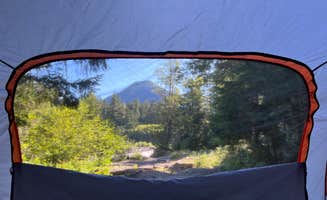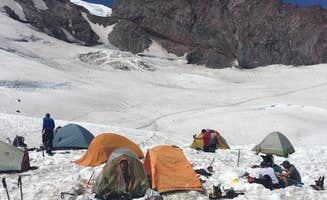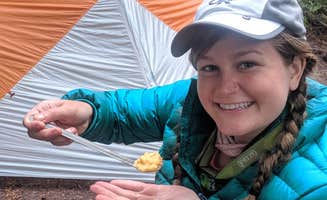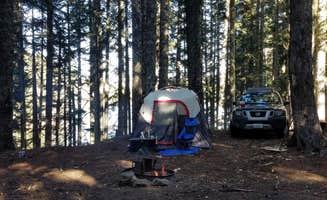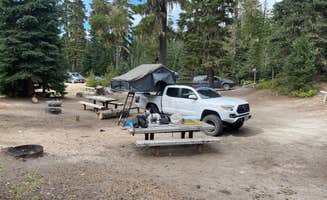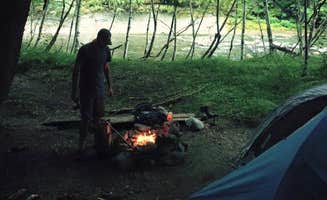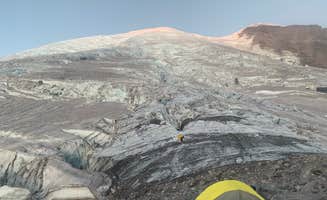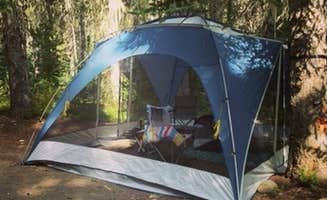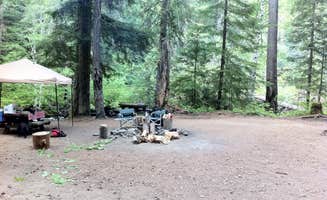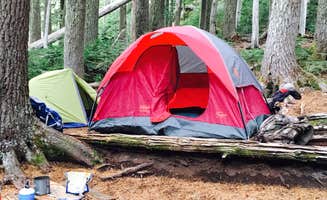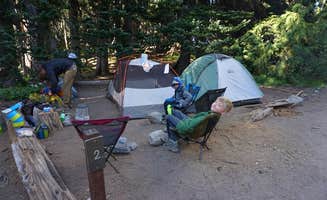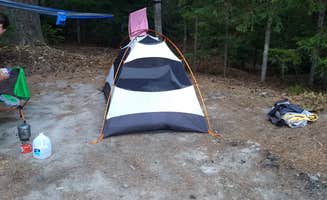Randle, Washington sits at 1,083 feet elevation where the Cowlitz and Cispus Rivers meet, surrounded by the Gifford Pinchot National Forest and Mount Rainier National Park. Summer temperatures typically range from 50-80°F, with July and August being the driest months. Tent camping sites in this area range from well-maintained established campgrounds to remote backcountry locations accessible only by hiking several miles from trailheads.
What to do
Fishing at stocked lakes: Council Lake offers trout fishing in a serene setting. "The trout fishing is good here. Boats are allowed, but electric or hand operated only," notes one camper at Council Lake, who also spotted "a river otter basking in the shallows, and several eagles diving for fish."
Hiking to scenic viewpoints: From Mowich Lake Campground, campers can access multiple trails. "We did the Tolmie Peak trail and the trailhead is straight off the campground which is super nice," says a visitor to Mowich Lake Campground. Another hiker adds, "Council Bluff trail starts in the middle of the campground and takes you to an amazing view of the mountains and the lake."
Wildlife viewing: Areas around Paradise Pines offer opportunities to see local wildlife. "The wildlife (deer) that wandered through every morning was delightful," mentions one camper at Paradise Pines, who enjoyed the peaceful setting near Mount Rainier National Park entrance.
What campers like
Privacy between sites: Many campers value separation from neighbors. At Tower Rock U-Fish RV Park, a visitor appreciated that it's "remote and serene" and that "you can walk to the river or leave the campground to walk on the road (which isn't very busy)." Another noted it's "quite remote so not the place to go if you want to stay connected to the outside world."
Clean facilities: Even rustic campgrounds maintain serviceable amenities. "Sites have tables, bear boxes and fire rings. Restrooms have flush toilets and sinks for dishes," reports a visitor to Cougar Rock Group Campground, adding "It's a dry site - as in no water at the campsites. There is a drinking fountain by the bathroom."
Accessibility to rivers: Many sites offer water access. One camper at NF-52 Dispersed Camping shares, "We found an awesome walk in spot a little bit earlier on the forest road before these actual coordinates. While we didn't have the comfort of our car parked right next to us, we had spectacular views of Mt. Rainier, easy access down to the river, and a fire pit."
What you should know
Road conditions vary widely: Some campgrounds require navigating rough roads. A camper warns that Mowich Lake Campground has "a gravel road to get up there, it's like 15 miles long and it's rough. Not the worst road I've ever been on but it wasn't fun and it felt like you had to drive it forever."
Insect activity: Be prepared for seasonal bug problems. "Yellow jackets can be aggressive, so be alert," notes a Council Lake visitor. Another camper at NF-52 Dispersed Camping mentioned, "There can be a lot of bugs, but there are lots of sites, and the view of rainier is amazing."
Temperature fluctuations: Even summer nights can be cold. A Mowich Lake camper cautions, "Even in July there is snow and temperatures reached as low as 40F. Fortunately we were prepared, but you may not be."
Toilet facilities: Amenities vary widely between sites. One Council Lake visitor described the facilities as "rustic, to put it kindly, so be prepared" and advised to "BYOTP, because you never know if or when it's been supplied."
Tips for camping with families
Bring portable water containers: Most dispersed sites lack water sources. "It's a dry site - as in no water at the campsites. There is a drinking fountain by the bathroom," explains a Cougar Rock camper who recommends bringing containers to fill and carry back to your site.
Pack entertainment options: Fishing can be family-friendly. At Tower Rock U-Fish RV Park, "There's a trout pond onsite and you can pay a small fee to fish, don't even need your own gear or a license," making it ideal for beginners and children.
Consider private campgrounds: Some families prefer more controlled environments. A visitor to Paradise Pines shared, "Our family loves staying in private camp sites. With little kids you really can't beat it! It's quiet and private while being so close to Rainier!"
Tips from RVers
Size restrictions apply: Many forest roads aren't suitable for larger vehicles. A Council Lake visitor advised, "It's a bit of a bumpy road in, most cars should be fine, but no RVs or long trailers. There's only 7 sites with 1 being the premium, on top of the hill, with a bit of a lake view."
Limited hookup options: Some RV sites offer basic amenities. "We stayed here in our RV and really enjoyed the peace and quiet. The sites have full hook ups," notes a Tower Rock RV Park visitor, who appreciated the remote setting despite limited connectivity.
Bring sufficient supplies: Remote locations mean limited services. "It's quite remote so not the place to go if you want to stay connected to the outside world. I don't even think we had cell coverage," explains an RVer who stayed near Randle, emphasizing the need to arrive fully stocked with necessities.


